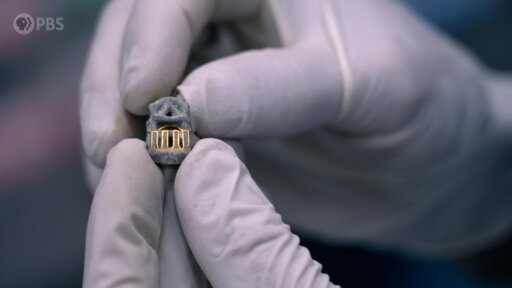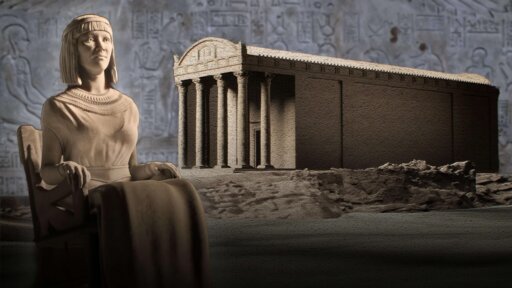Cleopatra VII, Egypt’s iconic queen, left behind few traces of her reign. Beneath the harbor of modern-day Alexandria, archaeologists have uncovered ancient coins bearing her image amid the ruins of a temple where she may have once worshipped. Historians believe this temple stood on the island of Antirhodos, which ultimately sank into the Mediterranean Sea following a series of earthquakes.
Features



♪♪ -One of the divers returns to the research vessel after two hours of digging.
She brings a small coin to the surface -- and it turns out to be a significant find.
-I found a very interesting coin.
It's bronze, from the Temple of Isis.
It's a very rare coin.
-Experts carry out a preliminary examination of the coin on site.
The on-board numismatist decodes the information still visible to determine which major figure in the temple's history is shown on the coin.
-It is very legible, and thus easy to identify.
Here we see the characteristic bun in the hair, and on the flip side is the Ptolemaic eagle, here associated with a double cornucopia and the sign of pi, which signifies its value, that's to say 80 units.
It's hard to read but the legend says "Cleopatra Basilices," meaning Queen Cleopatra.
-Cleopatra... Héloise is holding a 2,000-year-old coin bearing an effigy of the queen.
-Cleopatra is one of the most famous queens in the world, so it's always very moving to find coins from her reign.
-Very little does survive of Cleopatra.
The main surviving evidence we have are the coins.
And they are, you might say, the truest indicator of the character and nature of Cleopatra -- the only things that survive from her own time to tell us about how she wanted to present herself and perhaps how others saw her.
-It's incredibly fortunate the coin survived underwater for so long.
The Mediterranean Sea is a hostile world for metals.
-The mud protects the objects from the air, from oxygen, and from the seawater.
So, it creates just a nice enclosed environment around the coins that allows them to retain their original appearance.
